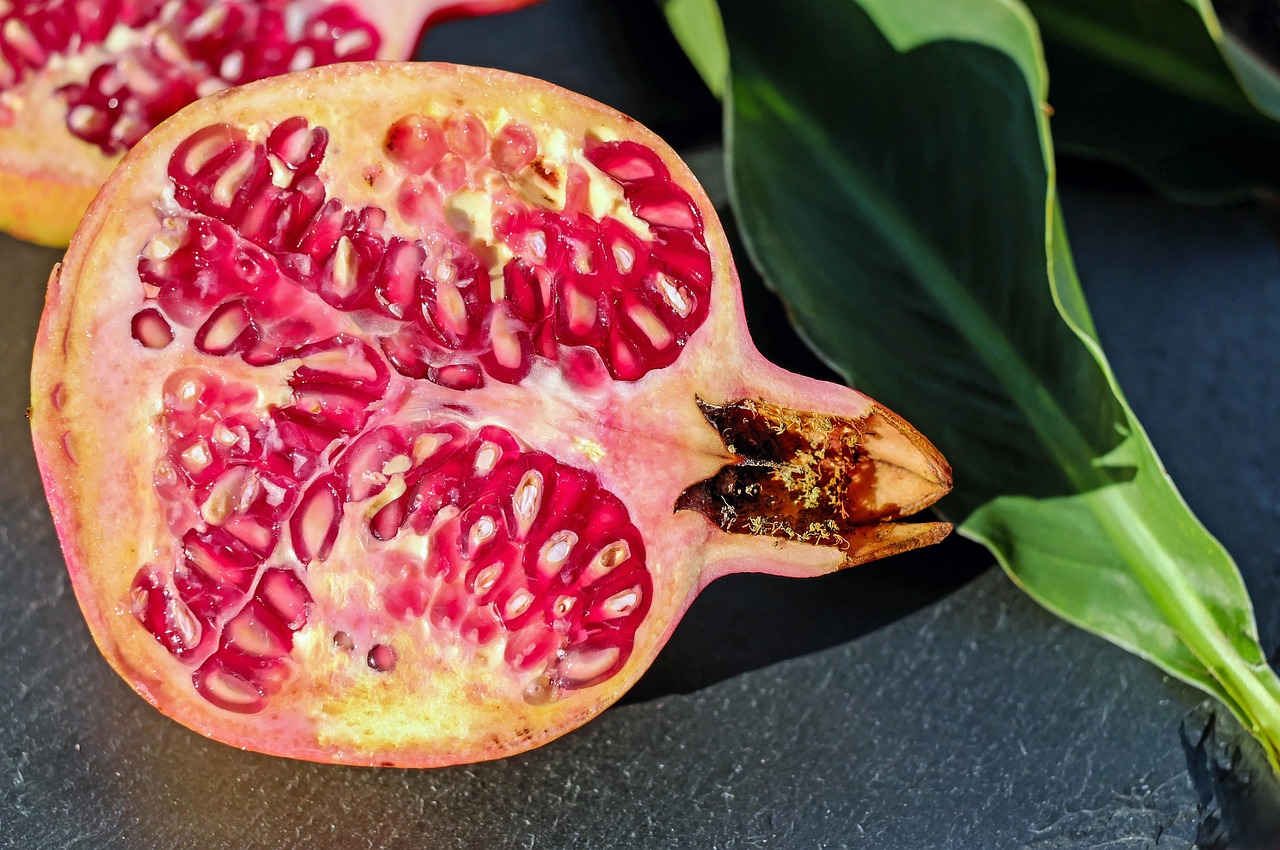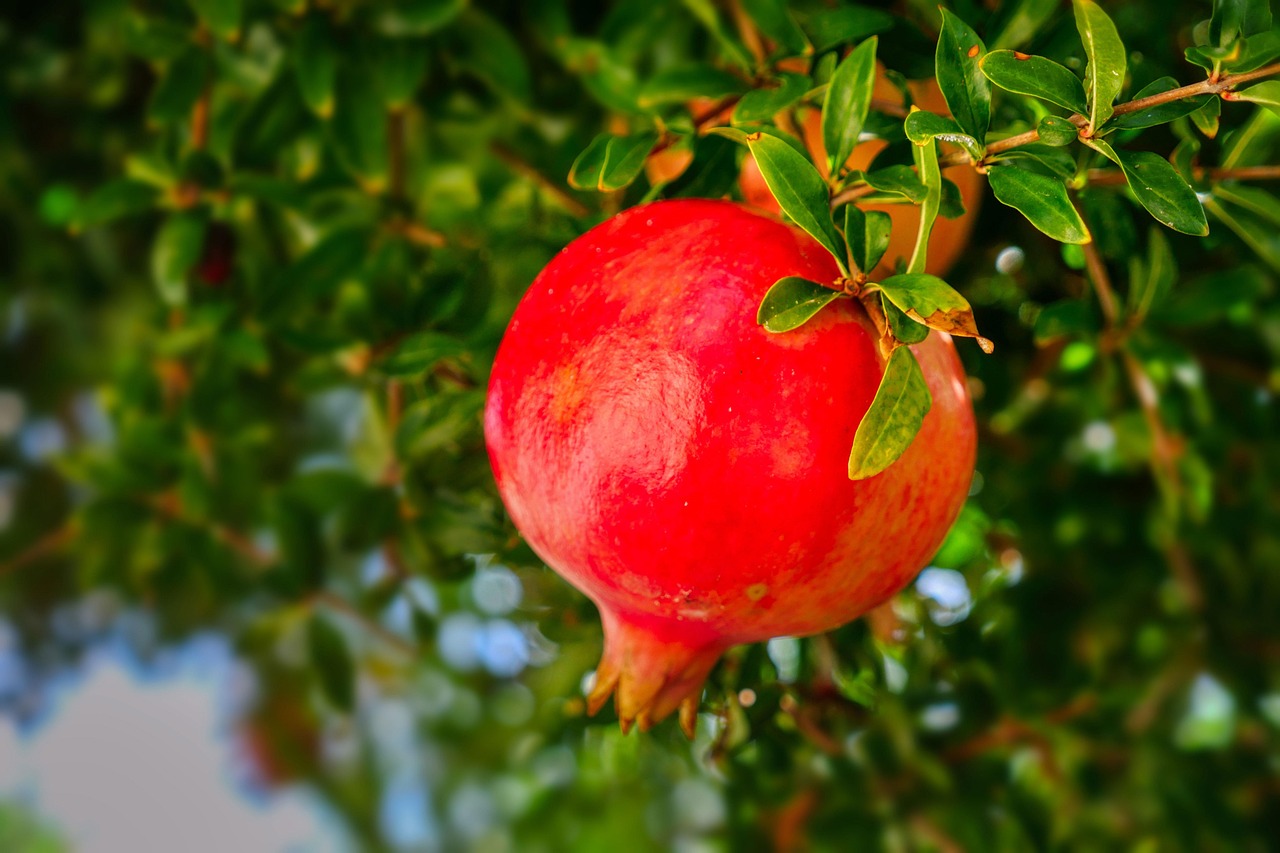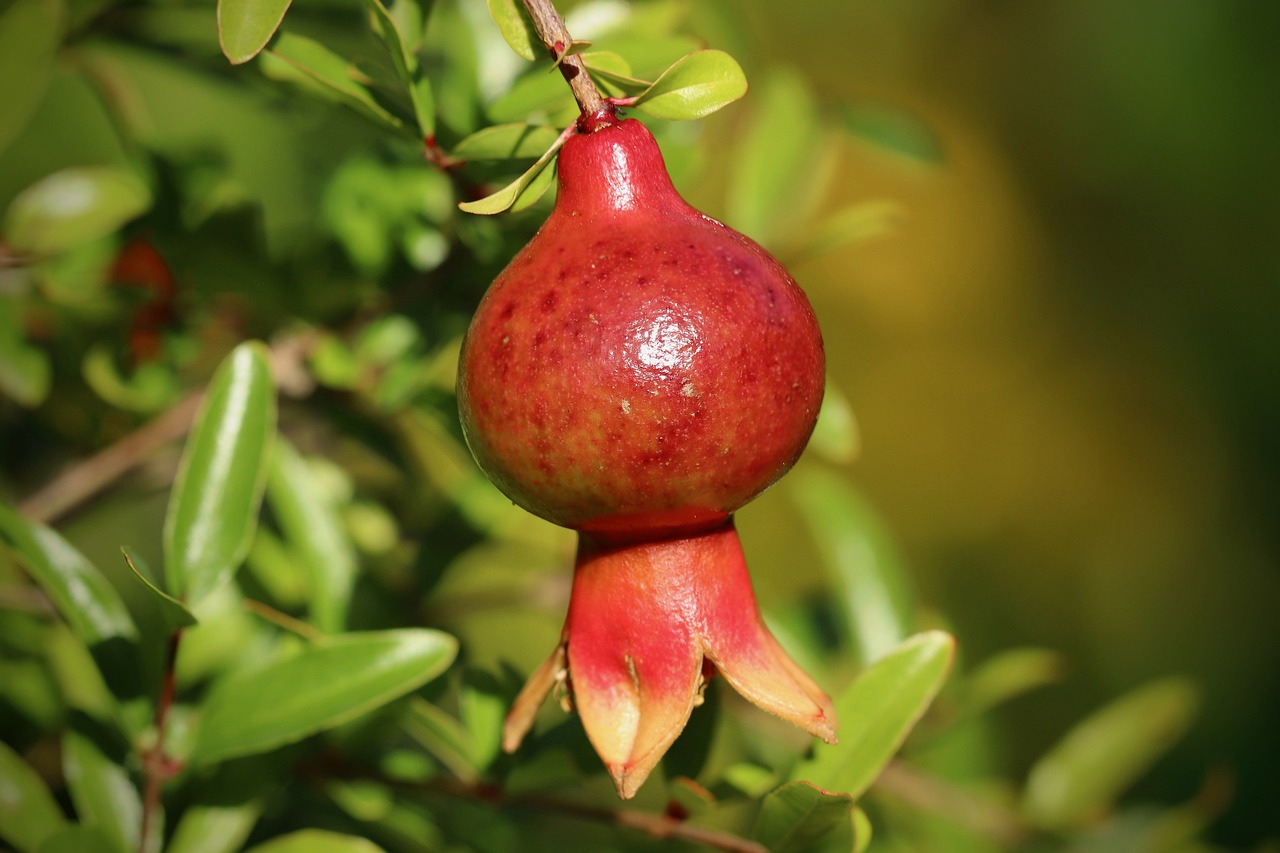Pomegranate trees generally exhibit a moderate growth rate, averaging about 12 to 24 inches per year in arid landscapes, depending on soil quality, water availability, and care provided.
Pomegranate Trees in Arid Landscapes
Pomegranate trees (Punica granatum) are well-suited for arid landscapes. They thrive in dry conditions and can withstand drought, making them an excellent choice for regions with limited rainfall. The adaptability of these trees allows them to flourish in various soil types, although they prefer well-draining soils with a pH level between 5.5 and 7.0.

The pomegranate tree is not only valued for its hardiness but also for its delicious fruit, which is rich in vitamins and antioxidants. In arid climates, the growth rate of pomegranate trees is influenced by several factors including temperature, water availability, and soil nutrients. Understanding these factors can help gardeners and farmers optimize growth and yield.
Growth Characteristics
Pomegranate trees typically reach a height of 10 to 30 feet, depending on the variety and growing conditions. Their growth rate can be categorized as follows:
| Growth Stage | Height (inches/year) |
|---|---|
| Seedling | 6 – 12 |
| Juvenile | 12 – 24 |
| Mature | 12 – 18 |
During the seedling stage, the tree focuses on establishing a strong root system. In the juvenile phase, growth accelerates as the tree develops its trunk and branches. Once mature, the growth rate levels off but can still produce substantial fruit yields annually.

Factors Influencing Growth Rate
Several factors significantly impact the growth rate of pomegranate trees in arid environments:
- Water Availability: Pomegranate trees require moderate irrigation, especially during their early years. Insufficient water can stunt growth.
- Soil Quality: Well-draining soils rich in organic matter promote healthy growth. Poor soil conditions can hinder development.
- Temperature: Pomegranates thrive in warm climates, ideally between 70°F to 85°F. Extreme temperatures can affect growth negatively.
- Sunlight: Full sun exposure is essential for optimal growth. Pomegranate trees need at least six hours of direct sunlight daily.
In arid regions, understanding these factors is crucial for successful cultivation. The right balance of water, nutrients, and environmental conditions can lead to vigorous growth and high fruit production.
Cultivation Practices
To enhance the growth rate of pomegranate trees in arid landscapes, certain cultivation practices should be implemented:

- Irrigation Management: Employ drip irrigation systems to deliver water directly to the roots while conserving moisture.
- Soil Amendments: Use organic compost to improve soil quality and retain moisture.
- Pruning: Regular pruning helps shape the tree and encourages better air circulation and sunlight penetration.
- Pest Control: Monitor for pests and diseases that may affect growth and implement organic pest control methods when necessary.
By adhering to these practices, growers can maximize the potential of pomegranate trees even in challenging arid conditions. Proper care not only enhances growth rates but also improves fruit quality.
Conclusion on Growth Rate Insights
The growth rate of pomegranate trees in arid landscapes is a reflection of their resilience and adaptability. Understanding how to manage their specific needs can lead to thriving trees that provide abundant fruit.
Optimal Conditions for Pomegranate Growth
To achieve the best growth rates for pomegranate trees in arid landscapes, it is vital to create conditions that closely resemble their natural habitat. This involves understanding and replicating environmental factors that support their growth and fruiting cycles. Below are some key elements that influence optimal growth conditions.

Soil Management
Soil quality plays a crucial role in the growth of pomegranate trees. The right soil conditions not only promote healthy root development but also enhance nutrient uptake. Here are essential considerations for soil management:
- Soil Texture: Pomegranate trees thrive in sandy loam or loamy soils. These soil types allow for proper drainage while retaining necessary moisture.
- Nutrient Levels: Performing a soil test can help determine nutrient levels and pH balance. Amending the soil with compost or organic fertilizers can improve fertility.
- Drainage: Ensuring good drainage is vital. Excess water can lead to root rot, which is detrimental to tree health.
Irrigation Techniques
Effective irrigation is especially important in arid climates where rainfall is limited. Here are some irrigation techniques that can enhance water efficiency:
- Drip Irrigation: This method delivers water directly to the roots, minimizing evaporation and runoff. It is highly effective in conserving water.
- Scheduling: Establishing a regular irrigation schedule based on seasonal changes and tree age can optimize water usage. Young trees may require more frequent watering.
- Mulching: Applying organic mulch around the base of the tree helps retain soil moisture and regulate temperature.
Light Requirements
Pomegranate trees require ample sunlight for optimal growth. They thrive best when exposed to at least six hours of direct sunlight daily. Understanding light requirements can help in planning tree placement:
- Spacing: Ensure adequate spacing between trees to prevent shading from nearby plants.
- Orientation: Planting trees in a south-facing direction can maximize sunlight exposure throughout the day.
- Seasonal Changes: Be aware of seasonal variations in light availability and adjust care accordingly during winter months.
Pomegranate Varieties for Arid Climates
Choosing the right variety of pomegranate tree can greatly affect growth rates and fruit production. Some varieties are specifically bred for resilience in drier conditions. Here are a few varieties known for their performance in arid landscapes:
| Variety | Description | Growth Rate |
|---|---|---|
| Wonderful | This is one of the most popular varieties, known for its large fruit and high juice content. | Moderate |
| Angel Red | A newer variety that produces sweet, juicy fruit and has good drought tolerance. | Fast |
| Savtah | This variety is well-suited for arid regions and produces smaller, flavorful fruits. | Moderate |
Selecting a variety that aligns with local climate conditions can enhance growth rates and yield. Additionally, it is important to consider local pests and diseases when choosing the right variety.
Cultural Practices for Enhanced Growth
Cultural practices significantly influence the growth and overall health of pomegranate trees. Implementing specific techniques can lead to better growth rates and fruit production:
- Fertilization: Using balanced fertilizers during the growing season can provide essential nutrients that promote growth.
- Pest Management: Regular monitoring for pests, such as aphids and whiteflies, helps maintain tree health. Organic methods like neem oil can be effective.
- Weed Control: Maintaining a weed-free zone around the base of the tree reduces competition for nutrients and water.
By integrating these cultural practices into a regular maintenance routine, growers can ensure that their pomegranate trees grow vigorously and produce quality fruit, even in harsh arid conditions.
Harvesting and Yield of Pomegranate Trees
Understanding the harvesting process and yield potential of pomegranate trees is essential for growers, especially in arid landscapes. Proper timing and techniques can significantly impact the quality and quantity of the fruit produced.
Harvesting Time
Pomegranate fruits typically mature in late summer to early fall, depending on the variety and local climate conditions. Here are some indicators to determine the right time to harvest:
- Color Change: The skin of the fruit will change from green to a rich red or yellowish hue when ripe.
- Fruit Size: Mature pomegranates are generally larger and more rounded than their immature counterparts.
- Sound Test: Ripe pomegranates make a metallic sound when tapped, indicating that they are ready for harvest.
Harvesting Techniques
To ensure minimal damage to the tree and maximize fruit quality, specific harvesting techniques should be employed:
- Use of Pruners: A pair of sharp pruning shears can help cut the fruit cleanly from the tree, avoiding damage to the branches.
- Avoid Pulling: Do not pull the fruit directly from the branches, as this can cause harm to the tree and lead to potential disease issues.
- Timing: Harvesting should ideally be done in the morning when temperatures are cooler, which helps maintain fruit quality.
Yield Expectations
The yield of pomegranate trees can vary based on factors such as tree age, variety, and growing conditions. Here are general expectations for yield:
| Tree Age (Years) | Yield (Pounds per Tree) |
|---|---|
| 1-2 | 5 – 10 |
| 3-5 | 20 – 50 |
| 6-10 | 50 – 100 |
| 10+ | 100 – 200 |
The figures above represent average yields and can be influenced by effective management practices, including irrigation, fertilization, and pest control. With proper care, mature trees can produce substantial amounts of fruit annually.
Pomegranate Tree Diseases and Pests
Pomegranate trees are susceptible to various diseases and pests that can hinder growth and reduce yield. Awareness of these threats is crucial for effective management.
Common Diseases
Several diseases can affect pomegranate trees, especially in arid climates where stress factors may be more prevalent. Some common diseases include:
- Root Rot: Caused by overwatering or poorly drained soil, root rot can severely damage or kill trees if not addressed promptly.
- Fungal Infections: Fungi like powdery mildew can affect leaves and fruit. Proper air circulation and fungicides can help manage this issue.
- Bacterial Blight: This disease causes leaf spots and can lead to defoliation. Regular pruning of affected areas is vital for control.
Pest Management Strategies
Pests can pose significant challenges to pomegranate cultivation. Here are some common pests and strategies for management:
- Aphids: These small insects feed on sap, weakening the tree. Introducing beneficial insects, such as ladybugs, can help keep aphid populations in check.
- Pomegranate Fruit Borer: This pest bores into the fruit, causing damage. Using traps and maintaining tree health can reduce borer infestations.
- Scale Insects: Scale insects create a protective shell that makes them difficult to control. Horticultural oils can effectively manage these pests.
Implementing an integrated pest management (IPM) approach can help mitigate risks posed by both diseases and pests while maintaining a healthy growing environment for pomegranate trees.
The Economic Value of Pomegranate Cultivation
Pomegranates hold significant economic value in agricultural markets, particularly in arid regions where traditional crops may struggle to thrive. Understanding this value can motivate growers to invest in pomegranate cultivation.
Market Demand
The demand for pomegranates has been increasing due to their health benefits and culinary versatility. Key points regarding market demand include:
- Nutritional Benefits: Pomegranates are rich in antioxidants, vitamins, and minerals, making them popular among health-conscious consumers.
- Diverse Uses: The fruit is used in juices, culinary dishes, and supplements, broadening its market appeal.
- Cultural Significance: Pomegranates hold cultural importance in many regions, further boosting their demand in local markets.
Profit Potential
Pomegranate cultivation can offer considerable profit potential when managed effectively. Factors contributing to profitability include:
- Low Water Requirements: Pomegranates require less water compared to many other fruit crops, making them suitable for arid regions with limited resources.
- Diverse Market Opportunities: The growing interest in organic and locally sourced produce creates avenues for premium pricing.
- Sustainability: Pomegranate trees contribute to soil health and biodiversity, appealing to environmentally conscious consumers.
The combination of increasing market demand and the unique advantages of pomegranate cultivation positions it as a viable option for farmers in arid landscapes looking for sustainable agricultural practices that yield economic benefits.
Future Trends in Pomegranate Cultivation
As the demand for pomegranates continues to rise, several trends are shaping the future of their cultivation, particularly in arid landscapes. Understanding these trends can help growers make informed decisions:
Technological Advancements
Innovations in agricultural technology are making it easier to cultivate pomegranates effectively:
- Precision Agriculture: Utilizing drones and sensors can help monitor soil moisture levels, nutrient content, and overall plant health, allowing for more efficient resource use.
- Automated Irrigation Systems: Smart irrigation systems can optimize water usage, ensuring that trees receive the right amount of water at the right time.
- Genetic Research: Ongoing research into pest-resistant and drought-tolerant pomegranate varieties may lead to improved growth rates and yields.
Organic Farming Practices
The shift towards organic farming is gaining momentum in pomegranate cultivation. Growers are increasingly adopting organic practices to meet consumer preferences:
- Natural Fertilizers: Utilizing compost and other organic amendments can enhance soil health and fruit quality.
- Integrated Pest Management (IPM): This approach combines biological, cultural, and chemical practices to control pests sustainably.
- Certification Opportunities: Obtaining organic certification can open up premium markets and increase profitability.
Consumer Trends
Consumer preferences are evolving, influencing the market for pomegranates:
- Health Consciousness: The increasing awareness of the health benefits associated with pomegranates is driving demand in health-focused markets.
- Sustainability Awareness: Consumers are increasingly seeking products that are sustainably sourced, making pomegranates from arid regions appealing due to their low water requirements.
- Culinary Versatility: As more chefs and home cooks experiment with pomegranates in diverse cuisines, the fruit’s popularity continues to grow.
Final Thoughts
The cultivation of pomegranate trees in arid landscapes presents a unique opportunity for farmers to thrive in challenging conditions. With a moderate growth rate and adaptability to dry climates, pomegranates offer an excellent alternative to traditional crops that may struggle in such environments.
Effective management practices—including proper irrigation, soil management, and pest control—are crucial for maximizing growth rates and yields. Additionally, the economic potential of pomegranates, bolstered by rising market demand and a shift towards sustainable practices, makes them an attractive option for growers.
As technology continues to advance and consumer preferences evolve, the future of pomegranate cultivation looks promising. By staying informed about emerging trends and adapting their practices accordingly, farmers can position themselves for success in the dynamic agricultural landscape.
In conclusion, with their numerous benefits and adaptability, pomegranate trees are not only a viable crop choice for arid regions but also a sustainable option that aligns with modern agricultural practices. Through dedicated care and innovative strategies, growers can ensure a fruitful harvest while contributing positively to both the economy and the environment.
